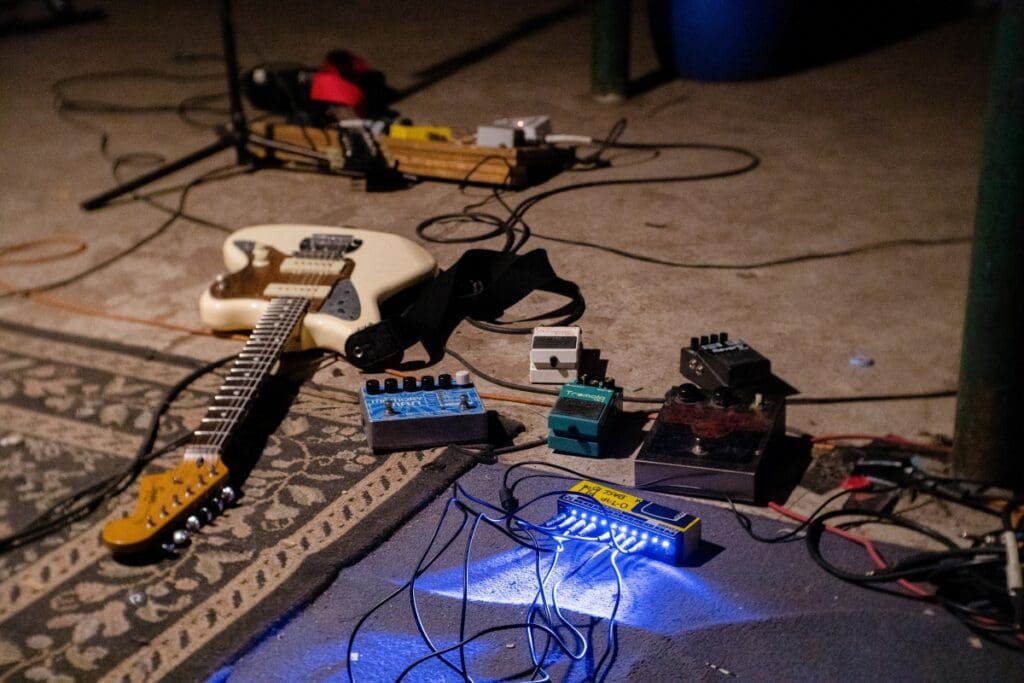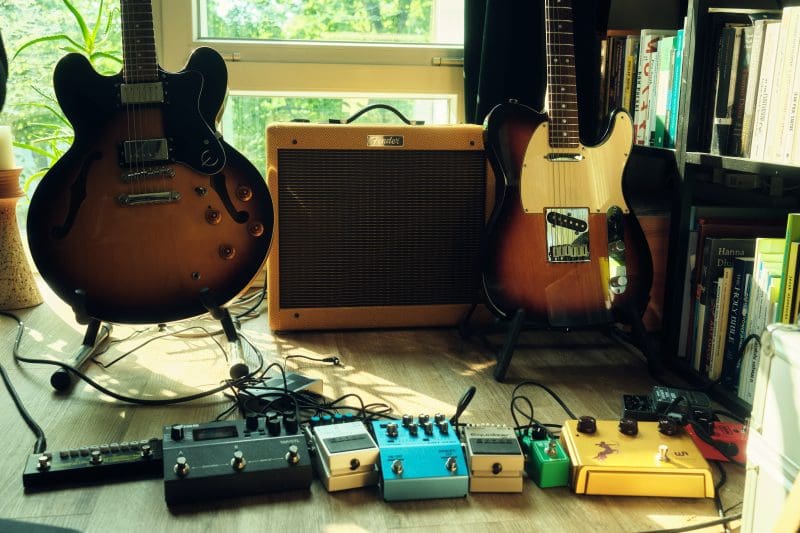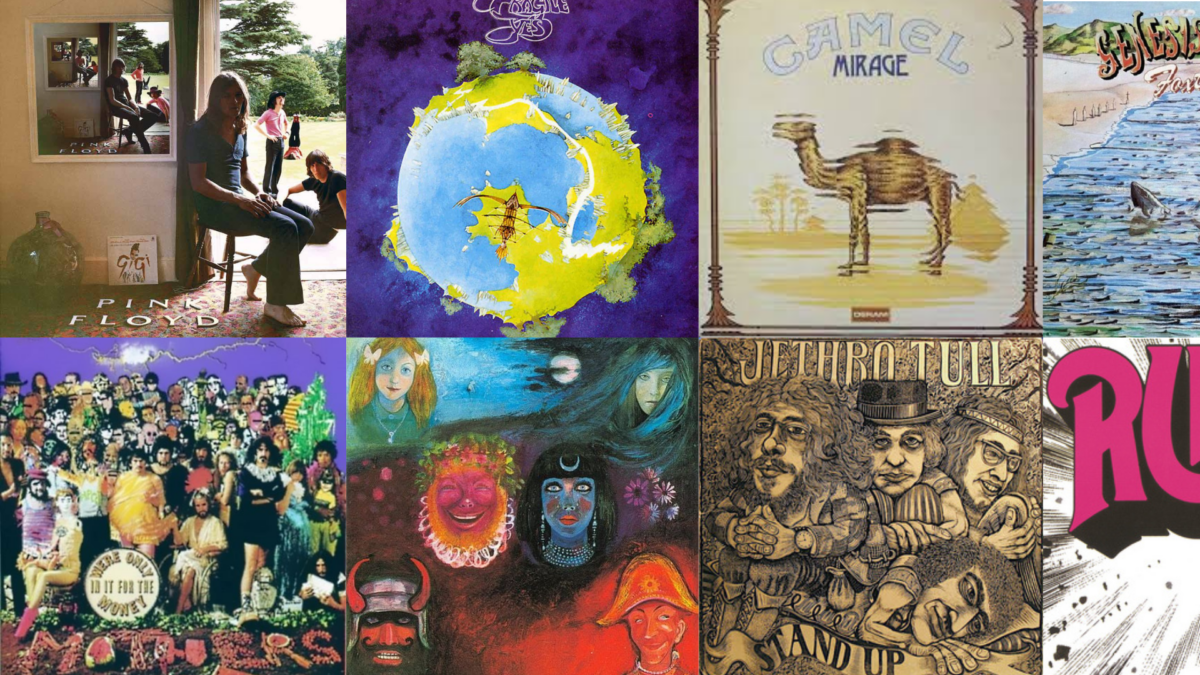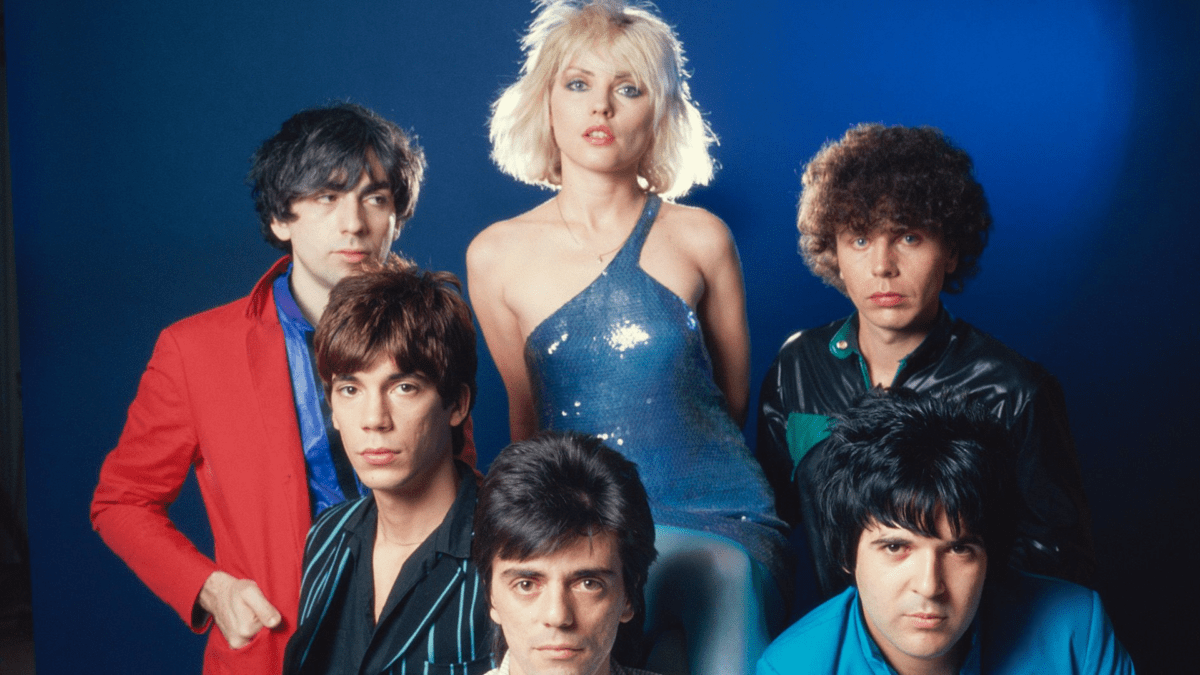
Welcome to the world of experimental rock, an intriguing, boundary-pushing genre that has left an indelible mark on the music industry. This genre is a fascinating blend of unprecedented sounds, innovative techniques, and ever-evolving styles. The world of experimental rock can be an exciting journey filled with surprises at every turn.
The beauty of experimental rock lies in its refusal to subscribe to established norms and conventions. It continually challenges the status quo, pushing the boundaries of rock music. With its roots deeply entrenched in the spirit of innovation, experimental rock constantly dares to venture into uncharted territories.
In this blog post, we will embark on an exploration into the compelling world of experimental rock. We’ll delve into its unique characteristics, its rich history, its cultural impact, and the artists who dared to tread the path less travelled. So, put on your headphones, turn up the volume, and let’s dive into the fascinating world of experimental rock.
What is Experimental Rock? Understanding the Genre
Experimental rock, as the name suggests, is a genre that experiments with the traditional norms of rock music. It seeks to explore new soundscapes and techniques, often incorporating elements from other music genres and using unconventional instruments and production methods.
This genre does not conform to a single style or sound. Instead, it is marked by its daring spirit to explore and innovate. From complex compositional structures to unconventional lyrical themes, experimental rock breaks boundaries and pushes the envelope.
In essence, experimental rock is an umbrella term that encompasses a wide range of sub-genres and styles, all of which share a common thread of innovation and experimentation. It is a genre that thrives on the fringes, continually questioning and challenging the established norms of rock music.
Characteristics of Experimental Rock

The beauty of experimental rock lies in diversity and fluidity. There are a few key characteristics that define this genre. First and foremost, it is a willingness to experiment and innovate. Whether it’s using unconventional instruments, incorporating different music styles, or exploring unique themes, experimental rock constantly pushes the boundaries of what is possible.
Another defining characteristic of the genre is its complex compositional structures. Unlike mainstream rock, which often adheres to a traditional verse-chorus system, experimental rock ventures into more complex and unpredictable territories. The songs often feature intricate arrangements, unexpected tempo changes, and unconventional structures.
Lastly, experimental rock is known for its emphasis on innovation over commercial success. While mainstream rock often caters to the popular tastes of the time, experimental rock is more about artistic expression and creative exploration. The artists in this genre are fearless in taking risks and challenging the status quo, even if it means alienating mainstream audiences.
The History and Evolution of Experimental Rock
Experimental rock has a rich and diverse history dating back to the mid-20th century. The genre started to take shape in the 1960s, with bands like The Velvet Underground and The Beatles incorporating experimental elements into their music. These artists were unafraid to break away from the traditional rock sound, using unconventional instruments and techniques to create something new.
In the 1970s, the genre continued to evolve with the rise of progressive rock and krautrock. These sub-genres took the experimental spirit of the 60s and pushed it even further, incorporating elements from classical music, jazz, and electronic music. Bands like Pink Floyd, King Crimson, and Can were at the forefront of this movement, creating music that was complex, innovative, and unlike anything else at the time.
The 1980s and 90s saw the emergence of post-rock and noise rock, two sub-genres that further expanded the boundaries of experimental rock. Post-rock bands like Mogwai and Godspeed You! Black Emperor created expansive, atmospheric soundscapes, while noise rock bands like Sonic Youth and The Jesus and Mary Chain experimented with dissonant sounds and feedback.
The Cultural Impact of Experimental Rock
The cultural impact of experimental rock is far-reaching. Despite its niche status, the genre has significantly influenced the broader music industry. It has pushed the boundaries of what is possible in rock music, inspiring countless artists to experiment and innovate.
Furthermore, experimental rock has also had a profound impact on popular culture. The genre has encouraged people to think outside the box and question established norms by challenging the status quo and daring to be different. This spirit of innovation and rebellion is deeply ingrained in the ethos of experimental rock.
Moreover, through its exploration of unconventional themes and refusal to cater to mainstream tastes, experimental rock has also contributed to a broader cultural dialogue about artistic freedom and creative expression. It has shown that music can be more than just entertainment – it can also be a powerful medium for self-expression and social commentary.
Famous Experimental Rock Artists and Bands
There is no shortage of talented artists and bands in the realm of experimental rock. Among them, some have left an indelible mark on the genre, pushing its boundaries and shaping its evolution.
The Velvet Underground, with their innovative use of feedback and distortion, were pioneers of the genre in the 1960s. The Beatles, too, experimented with unconventional song structures and production techniques, most notably in their groundbreaking album “Sgt. Pepper’s Lonely Hearts Club Band”.
In the 1970s, bands like Pink Floyd and King Crimson took experimental rock to new heights with their complex compositions and fusion of different music styles. Their albums “The Dark Side of the Moon” and “In the Court of the Crimson King” are considered landmarks in the genre.
More recent bands like Radiohead and Sigur Rós have continued pushing experimental rock’s boundaries, incorporating elements from electronic music and creating unique, atmospheric soundscapes.
10 Essential Experimental Rock Albums
Choosing the best experimental rock albums of all time is challenging, given the genre’s vast and diverse discography. However, here are ten albums that stand out for their innovation, creativity, and impact on the genre:
The Velvet Underground – “The Velvet Underground & Nico”
“The Velvet Underground & Nico” is a seminal album released in 1967 by the American rock band The Velvet Underground. The album’s experimental sound and provocative lyrics challenged the conventions of rock music at the time. Produced by Andy Warhol, the album features Nico’s haunting vocals and iconic songs such as “Sunday Morning” and “Heroin”. Despite its initial commercial failure, the album has since been recognised as one of the most influential albums in the history of rock music.
Captain Beefheart and His Magic Band – “Trout Mask Replica”
“Trout Mask Replica” is a highly experimental album by Captain Beefheart and His Magic Band, released in 1969. It features a unique blend of avant-garde rock, blues, and free jazz, with complex rhythms and dissonant melodies. The album’s unconventional approach to songwriting and recording, including the use of spoken word and unconventional instruments, has made it a cult classic and a landmark in the history of experimental music.
Pink Floyd – “Dark Side of the Moon”
Pink Floyd’s “Dark Side of the Moon” is a landmark album that seamlessly blends rock, jazz, and classical music into a cohesive and introspective exploration of themes such as life, death, and mental illness. Released in 1973, it spent a record-breaking 937 weeks on the Billboard 200 chart and has become one of the most beloved and influential albums of all time, thanks to its innovative production techniques, thought-provoking lyrics, and timeless sound.
Can – “Tago Mago”
Can’s “Tago Mago” is a groundbreaking album that fuses rock, jazz, and avant-garde music elements. Released in 1971, it features lengthy, improvisational tracks that explore the boundaries of traditional song structures. The album’s use of unconventional instrumentation and studio techniques influenced countless musicians in the years that followed, solidifying its place as a seminal work in the history of experimental rock.
The Mars Volta – “Frances the Mute”
“Frances the Mute” is the second studio album by American progressive rock band The Mars Volta. It was released in 2005 and features a complex and experimental sound that blends elements of jazz, punk, and Latin music. The album is a concept piece that tells the story of a man searching for his biological parents and includes extended instrumental passages and surreal lyrics. It received critical acclaim for its innovative approach to rock music and cemented The Mars Volta’s reputation as one of the most boundary-pushing bands of the 2000s.
Swans – “The Seer”
Swans’ “The Seer” is a massive, sprawling album that spans two hours and features a wide range of sounds and textures. The album is characterised by its intense and hypnotic rhythms, as well as its use of repetition and drone-like passages. The lyrics, which touch on themes of spirituality, nature, and the human condition, are delivered with a raw and visceral intensity that is both unsettling and deeply moving. Overall, “The Seer” is a challenging and rewarding listening experience that showcases Swans’ unique and uncompromising vision.
Yves Tumor – “Safe in the Hands of Love”
Yves Tumor’s “Safe in the Hands of Love” is a genre-bending album that defies easy categorisation. It seamlessly blends elements of experimental electronic music, R&B, and rock to create a unique and captivating sound. The album is both introspective and explosive, with haunting vocals and distorted beats that push the boundaries of conventional music. “Safe in the Hands of Love” is a bold and innovative work that showcases Yves Tumor’s immense talent and creativity.
Portishead – “Third”
Portishead’s “Third” is a haunting and experimental album that highlights the band’s ability to blend electronic and live instrumentation. The album’s dark and brooding atmosphere is complemented by Beth Gibbons’ haunting vocals and the innovative use of samples and soundscapes. “Third” is a departure from the trip-hop sound that Portishead is known for, but it is a bold and successful exploration of new musical territory.
Mr. Bungle – “California”
“California” is the third studio album by the American experimental rock band Mr. Bungle, released in 1999. The album features a diverse range of musical styles, including ska, pop, and metal, and incorporates elements of circus music and film scores. It received critical acclaim for its innovative and eclectic sound and is considered one of the band’s most successful and influential releases.
Radiohead – “Kid A”
Radiohead’s “Kid A” is a groundbreaking album that challenged the band’s previous sound and pushed the boundaries of electronic music. Released in 2000, it features a blend of experimental sounds, glitchy beats, and haunting vocals, creating an eerie and atmospheric listening experience. The album received critical acclaim and is considered a masterpiece of the 21st century.
The Future of Experimental Rock
Given its spirit of innovation and experimentation, the future of experimental rock is promising. As long as artists are willing to push the boundaries and challenge the status quo, the genre will continue to evolve and innovate.
Today, we see a new generation of artists testing the waters of what is possible in experimental rock. Artists like St. Vincent, Animal Collective, and Swans are carrying the torch forward, incorporating new technologies and exploring new soundscapes.
Moreover, with the advent of digital technologies and the democratisation of music production, it has become easier than ever for artists to experiment and innovate. This is likely to lead to even more diversity and innovation in the genre in the coming years.
How to Explore and Appreciate Experimental Rock
Exploring and appreciating experimental rock can be a rewarding journey. The genre encourages active listening, inviting listeners to discover new sounds, techniques, and ideas. Here are a few tips to help you delve into this fascinating genre:
- Start with the classics: Albums like “The Velvet Underground & Nico”, “The Dark Side of the Moon”, and “OK Computer” are great starting points to explore the genre.
- Be open-minded: Experimental rock is all about pushing boundaries and challenging norms. So, be open to different sounds, styles, and ideas.
- Listen actively: Listen to the music attentively, paying attention to the intricate arrangements, the unconventional instruments, and the unique themes.
- Explore different sub-genres: There’s a wide range of sub-genres within experimental rock, each with unique characteristics. Exploring these can help you appreciate the diversity of the genre.
Conclusion
Experimental rock is more than just a genre; it’s a testament to the limitless possibilities of music. It’s a celebration of innovation, creativity, and daring spirit. Whether you’re a seasoned listener or a newcomer, the world of experimental rock is a thrilling journey filled with surprises. So, put on your headphones, turn up the volume, and let the music take you on a journey.










